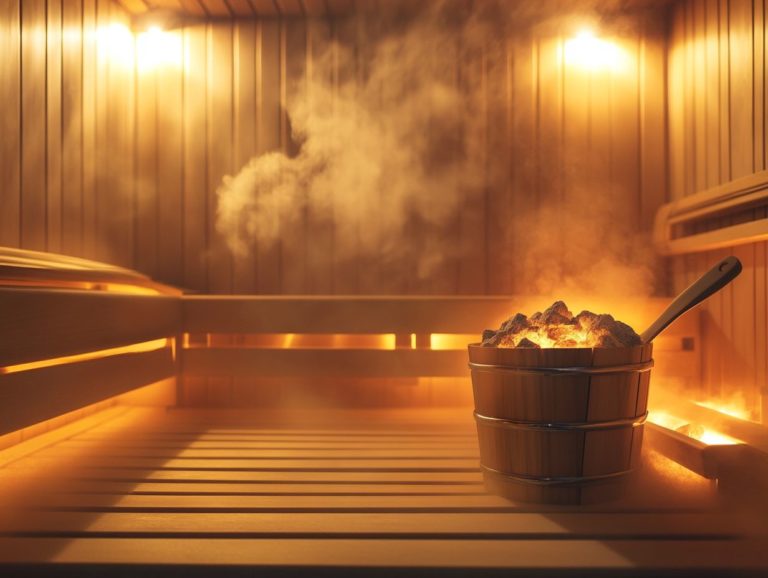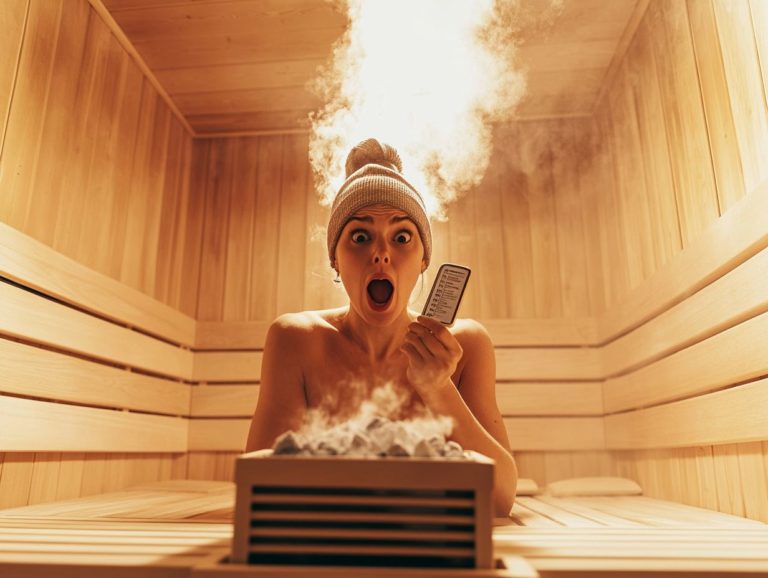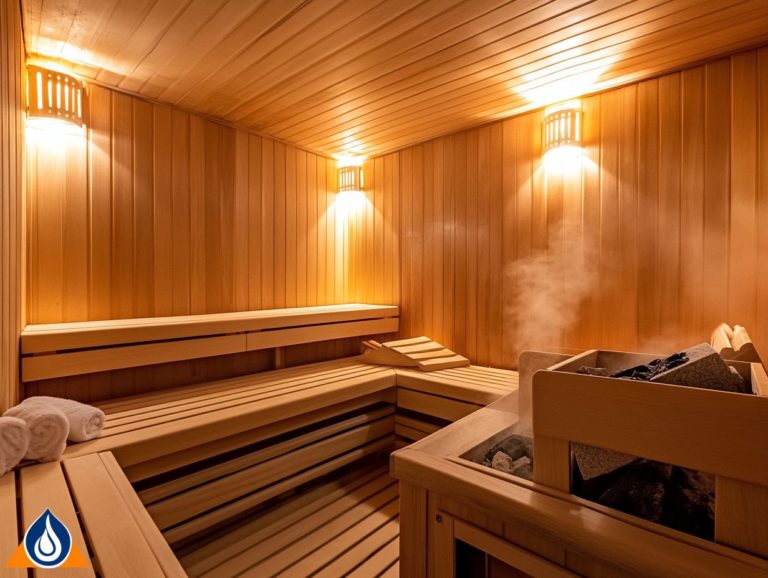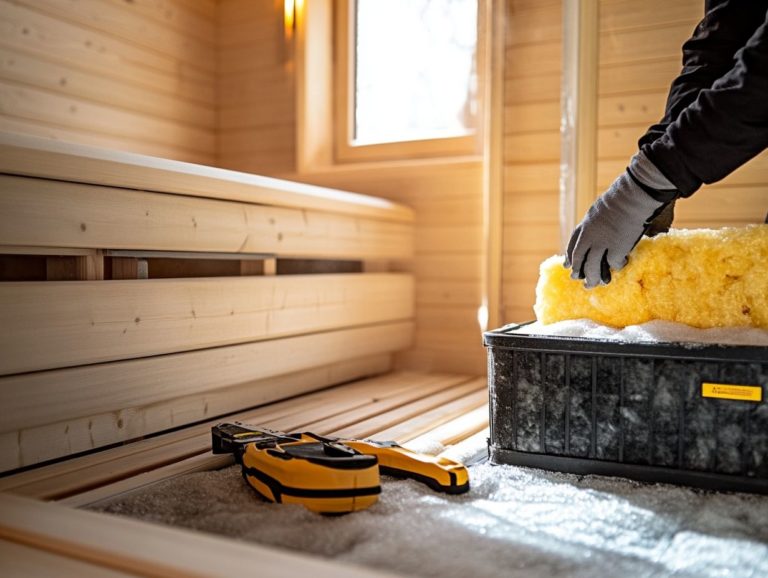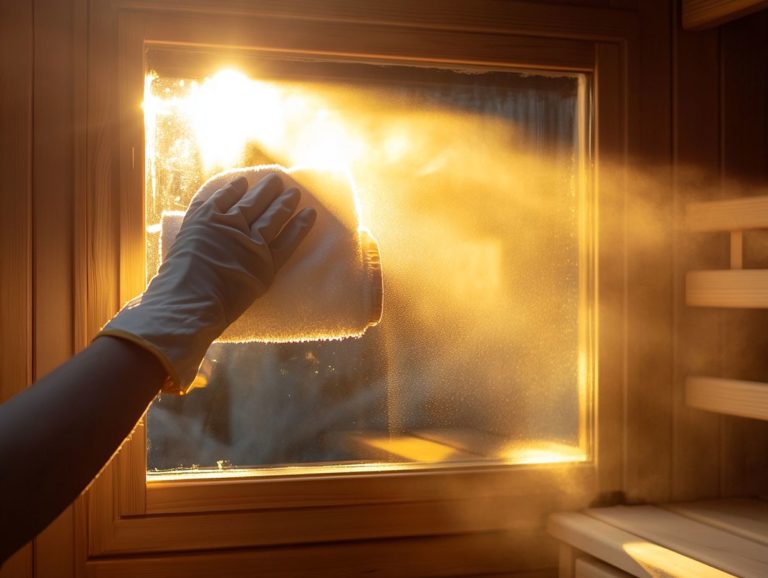Understanding Sauna Wiring and Maintenance
Saunas provide a serene retreat and a host of health benefits. Achieving optimal performance, however, requires meticulous wiring and regular maintenance.
This article explores the various types of saunas and their unique electrical requirements, with a strong emphasis on safety and efficiency. You ll discover essential cleaning techniques, learn about common issues that may arise, and find effective solutions.
We will also examine the pros and cons of DIY maintenance versus hiring a professional. This information will empower you to make an informed decision regarding the care of your sauna.
Contents
- Key Takeaways:
- Types of Saunas
- Wiring a Sauna
- Maintenance of Saunas
- Benefits of Regular Maintenance
- DIY vs Professional Maintenance
- Frequently Asked Questions
- What is sauna wiring and why is it important?
- What are the common types of saunas and their wiring requirements?
- How should a sauna be wired for safety?
- What are some important maintenance tips for sauna wiring?
- Can sauna wiring be installed outdoors?
- What should I do if I experience any issues with my sauna’s wiring?
Key Takeaways:
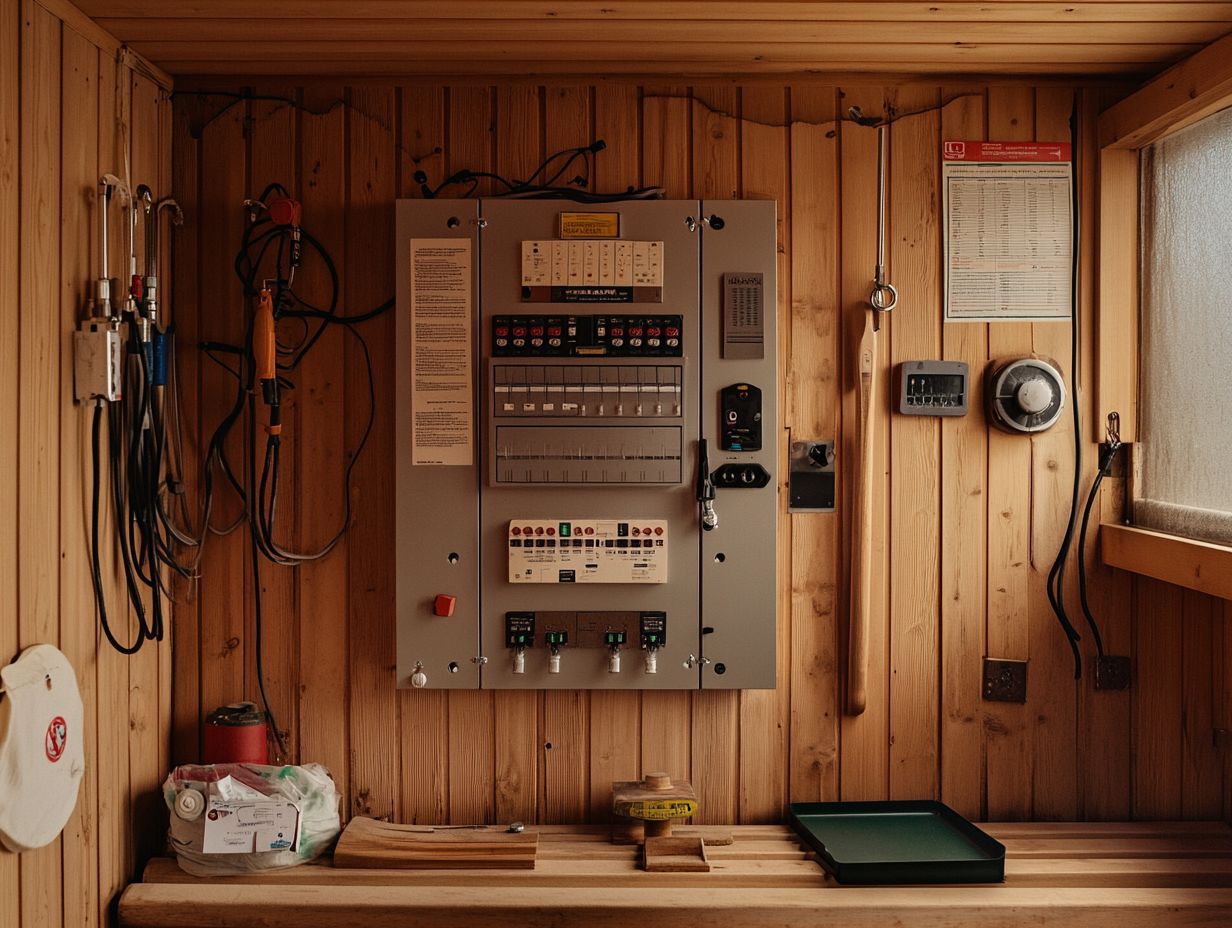
- Understanding the electrical requirements and safety measures for wiring a sauna is crucial for a safe and efficient experience.
- Regular maintenance and cleaning help ensure longevity while promoting safety and efficiency.
- Consider the pros and cons of DIY maintenance versus professional help to determine the best option for your sauna.
Types of Saunas
Saunas offer a variety of experiences and benefits, each designed to cater to your unique preferences and needs. Traditional saunas, for instance, rely on heated rocks or wood stoves to create a high-temperature, low-humidity environment that promotes relaxation and detoxification.
In contrast, infrared saunas use infrared heaters to generate warmth that penetrates the skin more deeply, all while operating at lower temperatures. Understanding the differences between these sauna types, including their specific heater installations, maintenance requirements, and safety features, is crucial for enhancing your wellness routine with a sauna.
Wiring a Sauna
Wiring a sauna requires meticulous planning and awareness of specific electrical requirements, including voltage and circuit breaker specifications. It s advisable to consult a licensed electrician who can install a special circuit that only serves your sauna heater.
This step is vital for preventing overload and ensuring your sauna operates efficiently. The installation also involves setting up an electrical box and circuit breaker that comply with local codes while considering the lighting needs that will enhance your sauna experience. Regular checks and maintenance, as outlined in why regular maintenance is crucial for saunas, can further improve its performance.
Electrical Requirements and Safety
The electrical requirements for your sauna are essential for ensuring both safety and optimal performance. Expertise from a licensed electrician is necessary.
You ll need to understand specific circuit types, as most residential saunas typically require a dedicated 240-volt circuit. It’s crucial to select circuits with sufficient amperage generally between 30 to 60 amps to effectively power the heating elements.
Paying close attention to safety protocols, such as incorporating GFCI breakers (devices that prevent electric shocks), is imperative. Common pitfalls, like underestimating circuit load or overlooking local building codes, can result in costly violations or unsafe conditions.
By adhering strictly to these essential requirements and protocols for your traditional sauna or infrared sauna, you can ensure a reliable and truly enjoyable sauna experience.
Maintenance of Saunas
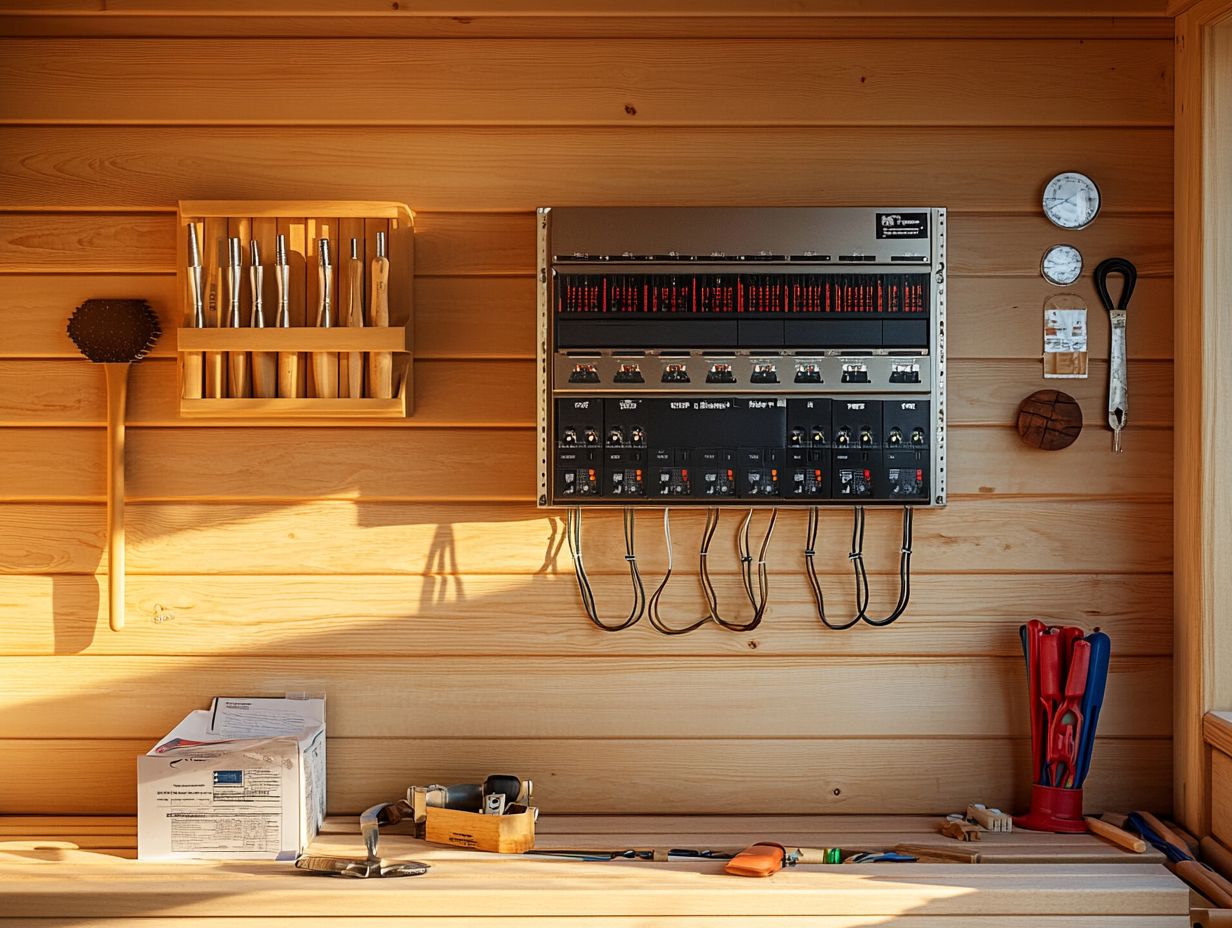
Keeping your sauna in top shape is the secret to a fantastic and long-lasting experience! Regular cleaning is key; it helps remove residue and prevent mold.
Equally important is monitoring humidity levels, which plays a significant role in maintaining the sauna’s integrity and your comfort. This involves routinely checking the heater, ventilation, and other components to ensure everything is functioning optimally, creating a safe and delightful experience for everyone who steps inside.
Don t wait! Start maintaining your sauna today to enjoy all its benefits!
Summary: In this article, we’ve covered the electrical requirements, maintenance techniques, and safety protocols for enjoying your sauna to the fullest. Additionally, understanding sauna insulation and maintenance is crucial. By adhering to these guidelines and seeking professional help when necessary, you can create a relaxing oasis right in your home!
Cleaning and Regular Maintenance
Cleaning and regular maintenance are essential for ensuring the longevity and safety of your sauna. By routinely wiping down surfaces with suitable cleaners, you can effectively prevent the buildup of grime and bacteria.
Check the heater installation and other parts to avoid potential hazards. Establishing a maintenance schedule will help you stay organized and provide a consistently safe environment for everyone who enjoys your sauna.
Make it a priority to clean your sauna thoroughly every month! Start by using a soft cloth or sponge with a mild, non-toxic cleaner to wipe down the wooden surfaces harsh chemicals can be detrimental to the wood.
For glass doors and windows, a quality glass cleaner will ensure visibility and a pristine view into the sauna. Pay special attention to the benches and floors, while also looking for any signs of mold or mildew.
Inspect the heater for loose connections or rust twice a year. A proper maintenance routine not only guarantees cleanliness but also significantly enhances safety and efficiency.
Common Problems and How to Fix Them
Common problems in saunas often stem from inadequate maintenance, improper heater installations, or overlooked safety measures. You may encounter issues like uneven heating, malfunctioning controls, or water supply challenges.
Understanding these potential pitfalls and having a proactive plan in place can ensure a satisfying experience while maintaining the sauna’s integrity.
Regular inspections and maintenance are essential for sauna owners to avoid these complications. Keep an eye on the heater s performance by monitoring temperature levels and listening for any unusual sounds.
If the controls become unresponsive, you might need to reset the system or replace any faulty components.
Water supply issues generally trace back to clogged lines or inadequate drainage. Both can be easily fixed with proper cleaning and routine checks. By addressing these concerns promptly, you can save yourself from costly repairs.
Provide a safe and enjoyable environment for your users by establishing a solid maintenance routine.
Benefits of Regular Maintenance
Regular maintenance of your sauna brings a wealth of benefits that elevate both its efficiency and safety for users. By prioritizing routine checks and upkeep, you can ensure that all parts, including heaters and ventilation systems, operate at their best.
This not only enhances your overall sauna experience but also considerably lowers the risk of accidents or malfunctions. For anyone investing in this wellness feature, such maintenance is nothing short of essential.
Efficiency and Safety
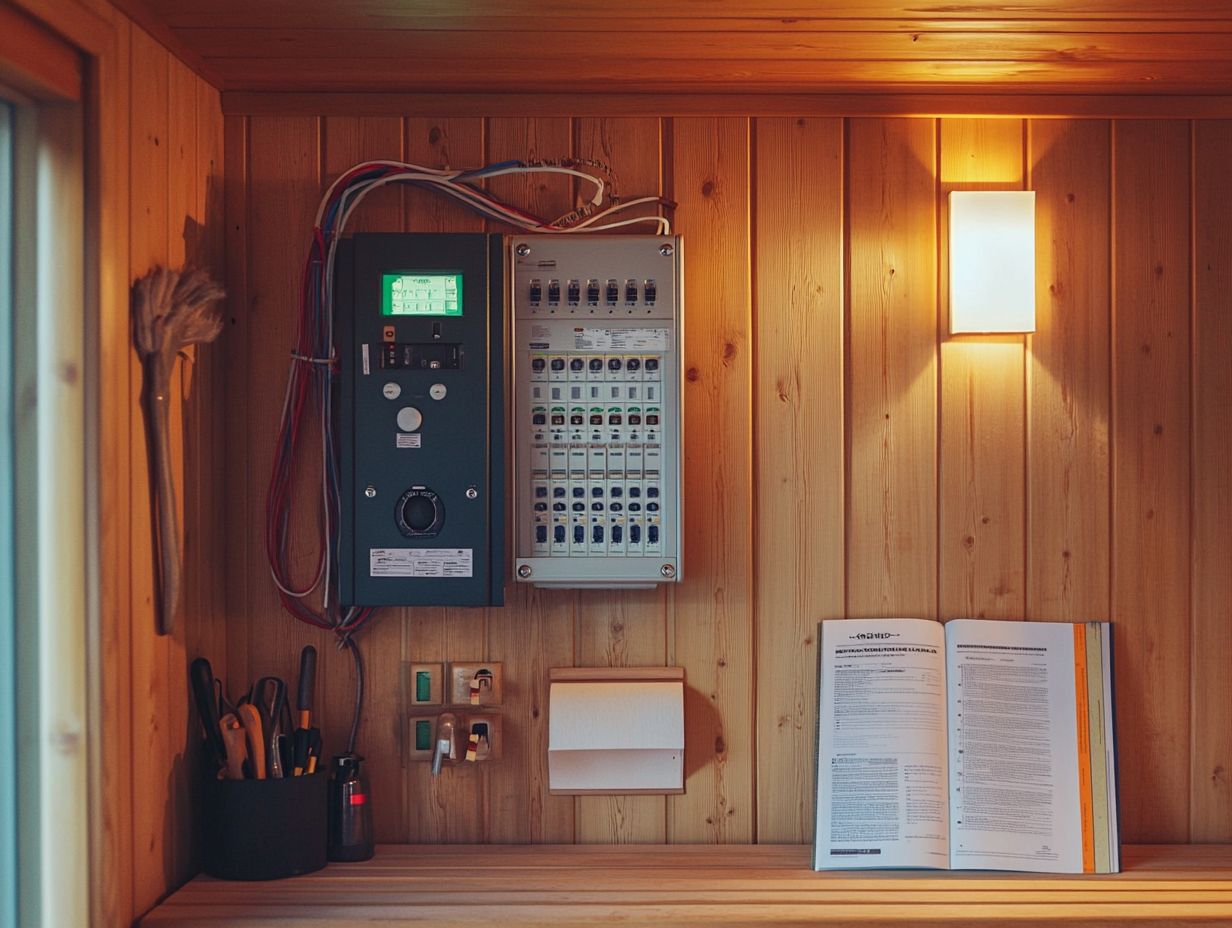
The efficiency and safety of your sauna hinge on regular cleaning and checks, making upkeep absolutely essential. When you ensure that all parts, including heaters and ventilation, are functioning optimally, you create a safer environment for everyone.
This proactive approach helps prevent accidents and extends the lifespan of your sauna, ensuring a consistently enjoyable experience.
Well-maintained electrical components, such as wiring and circuit breakers, are crucial for enhancing overall performance. By regularly inspecting and servicing these elements, you significantly reduce the risk of electrical failures.
Regular checks not only ensure that your sauna operates within its intended parameters but also improve energy efficiency. Enjoy a comfortable and secure environment by focusing on these vital maintenance tasks.
Start your maintenance routine today to enjoy a safe and relaxing sauna experience!
DIY vs Professional Maintenance
Deciding between DIY sauna maintenance and hiring a professional? Consider the pros and cons of each. DIY can be cost-effective and satisfying, but it lacks the knowledge and skills needed for electrical safety and proper compliance.
Hiring a professional ensures compliance with safety standards. You ll benefit from a more effective maintenance routine.
Pros and Cons of Each Option
DIY maintenance can be rewarding and budget-friendly. However, improper procedures can lead to costly mistakes.
Professionals bring expertise and ensure safety codes are followed, but their services come at a higher cost.
Choosing DIY allows you to set your own maintenance schedule. This can enhance efficiency and give you a sense of satisfaction.
However, improper handling of electrical components can pose serious safety risks. This could lead to damage or even injury.
Conversely, hiring professionals guarantees that maintenance tasks are executed correctly and on time, minimizing the risks associated with improper care. This not only extends the lifespan of your sauna but may also improve its energy efficiency, resulting in lower utility bills.
Ultimately, it s crucial to understand how each choice aligns with your personal capabilities and safety priorities to make an informed decision.
Frequently Asked Questions
What is sauna wiring and why is it important?
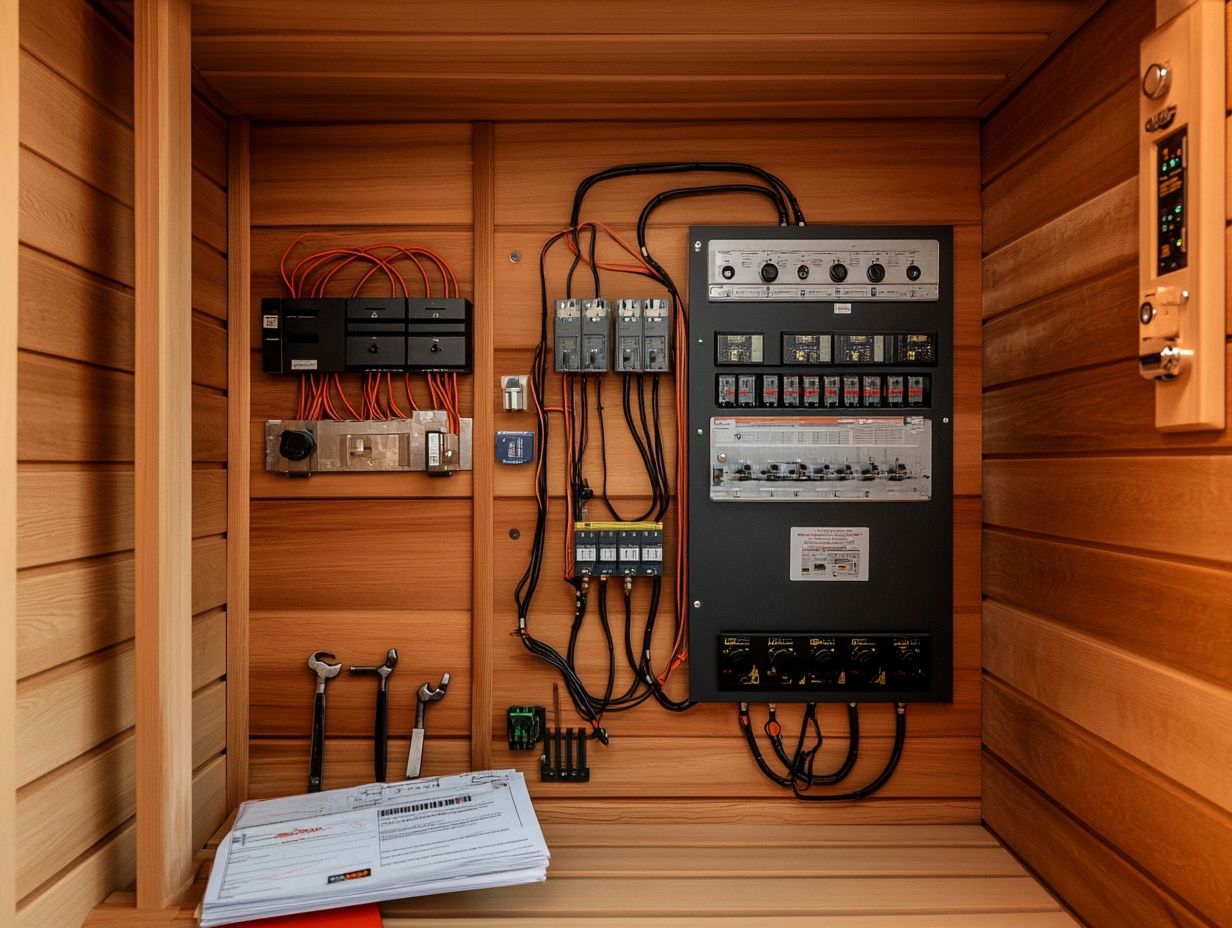
Sauna wiring refers to the electrical system that powers a sauna, including lights, heaters, and any other necessary components. It is important to ensure proper sauna wiring in order to safely and efficiently operate the sauna.
What are the common types of saunas and their wiring requirements?
The most common types of saunas include traditional (wood-burning), electric, and infrared. Traditional and electric saunas typically require a dedicated 240-volt circuit, while infrared saunas may only need a 120-volt circuit.
How should a sauna be wired for safety?
Sauna wiring should be done by a licensed electrician to ensure proper installation and safety. The wiring should also be protected with a GFCI (ground-fault circuit interrupter) to prevent electric shock in case of any malfunctions.
What are some important maintenance tips for sauna wiring?
Regularly checking for any signs of wear or damage to the wiring, such as frayed wires or loose connections, is crucial to prevent potential hazards. It is also important to keep the wiring and the surrounding area clean and free of debris to avoid any fire hazards.
Can sauna wiring be installed outdoors?
Yes, sauna wiring can be installed outdoors, but it is important to use weatherproof materials and ensure proper grounding to protect against moisture and other outdoor elements. It is recommended to consult with a licensed electrician for outdoor sauna wiring.
What should I do if I experience any issues with my sauna’s wiring?
If you experience any issues with your sauna’s wiring, such as flickering lights or tripping circuit breakers, it is important to turn off the power to the sauna and contact a licensed electrician for repairs. Do not attempt to fix any wiring issues yourself as it can be dangerous.
Always prioritize safety. If you’re unsure, consult a professional!

